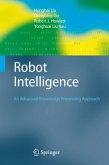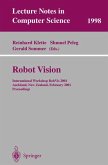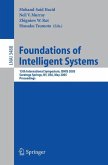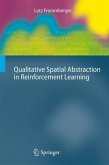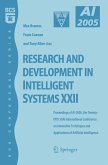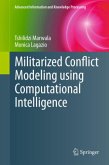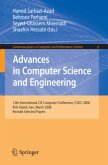This innovative book discusses engineering solutions for the automatic understanding of a complex scene via multi-modal arrays of sensors. It focuses on research dealing with robotic platforms that augment an environment. In particular, it considers the study of information fusion methods, the study of algorithms for ontology learning from tabula rasa information and the integration of new types of sensors into existing networks of heterogeneous sensors. It also concentrates on the development and deployment of fielded solutions in public spaces and the evaluation of systems.
Intelligent Environments explores artificial intelligence techniques, essential for implementing AmI systems. Applications including intelligent environments (smart homes, smart public spaces e.g. airports, museums, etc), ubiquitous computing and wearable devices are also covered.
This broad-ranging state-of-the-art volume will be of interest to researchers in academia and industry as well as practitioners and graduate students.
Relatively new research ?elds such as ambient intelligence, intelligent envir- ments, ubiquitous computing, and wearable devices have emerged in recent years. These ?elds are related by a common theme: making use of novel technologies to enhance user experience by providing user-centric intelligent environments, - moving computers from the desktop and making computing available anywhere and anytime. It must be said that the concept of intelligent environments is not new and beganwithhomeautomation. Thechoiceofnameforthe?eldvariessomewhatfrom continent to continent in the English-speaking world. In general intelligent space is synonymous to intelligent environments or smart spaces of which smart homes is a sub?eld. In this collection, the terms intelligent environments and ambient int- ligence are used interchangeably throughout. Such environments are made possible by permeating living spaces with intelligent technology that enhances quality of life. In particular, advances in technologies such as miniaturized sensors, advances in communication and networking technology including high-bandwidth wireless devices and the reduction in power consumption have made possible the concept of intelligent environments. Environments such as a home, an of?ce, a shopping mall, and a travel port utilize data provided by users to adapt the environment to meet the user's needs and improve human-machine interactions. The user information is gathered either via wearable devices or by pervasive sensors or a combination of both. Intelligent environments brings together a number of research ?elds from computer science, such as arti?cial intelligence, computer vision, machine learning, and robotics as well as engineering and architecture.
Intelligent Environments explores artificial intelligence techniques, essential for implementing AmI systems. Applications including intelligent environments (smart homes, smart public spaces e.g. airports, museums, etc), ubiquitous computing and wearable devices are also covered.
This broad-ranging state-of-the-art volume will be of interest to researchers in academia and industry as well as practitioners and graduate students.
Relatively new research ?elds such as ambient intelligence, intelligent envir- ments, ubiquitous computing, and wearable devices have emerged in recent years. These ?elds are related by a common theme: making use of novel technologies to enhance user experience by providing user-centric intelligent environments, - moving computers from the desktop and making computing available anywhere and anytime. It must be said that the concept of intelligent environments is not new and beganwithhomeautomation. Thechoiceofnameforthe?eldvariessomewhatfrom continent to continent in the English-speaking world. In general intelligent space is synonymous to intelligent environments or smart spaces of which smart homes is a sub?eld. In this collection, the terms intelligent environments and ambient int- ligence are used interchangeably throughout. Such environments are made possible by permeating living spaces with intelligent technology that enhances quality of life. In particular, advances in technologies such as miniaturized sensors, advances in communication and networking technology including high-bandwidth wireless devices and the reduction in power consumption have made possible the concept of intelligent environments. Environments such as a home, an of?ce, a shopping mall, and a travel port utilize data provided by users to adapt the environment to meet the user's needs and improve human-machine interactions. The user information is gathered either via wearable devices or by pervasive sensors or a combination of both. Intelligent environments brings together a number of research ?elds from computer science, such as arti?cial intelligence, computer vision, machine learning, and robotics as well as engineering and architecture.


